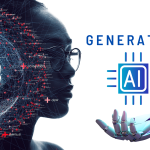Explore how Neuralink and Brain-Computer Interfaces are revolutionizing human-machine interaction, enhancing communication, and shaping the next era of artificial intelligence.
Table of Contents
Introduction
The human brain remains the most powerful computing system ever created. For decades, scientists have imagined connecting it directly to digital systems and now, that dream is becoming reality through Brain-Computer Interfaces (BCIs).
Among the pioneers leading this transformation is Neuralink, founded by Elon Musk, with a mission to merge the human mind with artificial intelligence. BCIs are redefining how we think, communicate, and interact with the world around us.
What is a Brain-Computer Interface?
A Brain-Computer Interface (BCI) enables direct communication between the brain and external electronic devices. Instead of relying on keyboards or touchscreens, BCIs interpret neural signals and translate them into commands.
In simple terms, a person can move a cursor, type, or control a robotic limb using only their thoughts.
How BCIs Work
- Signal Acquisition: Electrodes detect neural activity from brain regions associated with movement or intent.
- Signal Processing: Algorithms analyze these signals to interpret what the brain is trying to do.
- Command Execution: The interpreted commands control external devices such as prosthetics or computers.
This entire process happens in milliseconds, creating a seamless brain-to-device connection.
Neuralink’s Vision for the Future
Neuralink, founded in 2016, is at the forefront of neurotechnology innovation. The company aims to build high-bandwidth brain implants capable of connecting human consciousness directly to AI systems.
Key Highlights of Neuralink’s Technology
- Wireless Data Transfer: The Link chip communicates without cables, transmitting brain data securely.
- Microscopic Threads: Flexible electrodes capture thousands of neural signals with minimal brain tissue damage.
- Surgical Precision Robot: A custom robot implants these threads safely into the brain.
- Real-Time Brain Interaction: Neuralink enables thought-controlled interfaces and real-time feedback loops.
The technology has already demonstrated promise, including a monkey controlling a video game purely through neural activity a groundbreaking example of what’s to come.
Applications of Brain-Computer Interfaces
BCIs are not just futuristic experiments; they have real-world potential in healthcare, communication, and human augmentation.
a. Medical Advancements
- Restoring Movement: People with spinal injuries can regain motor control through thought-controlled prosthetics.
- Treating Neurological Disorders: BCIs may help manage Parkinson’s disease, depression, and epilepsy.
- Memory Enhancement: Researchers are exploring how BCIs can improve memory and cognitive performance.
b. Communication Tools
For individuals with paralysis or ALS, BCIs can convert thoughts into text or speech, restoring their ability to communicate effectively.
c. Human-AI Integration
Neuralink envisions a future where humans and AI coexist symbiotically. By connecting the brain directly to intelligent systems, humans could expand cognition, access information instantly, and bridge the gap between biological and artificial intelligence.
Ethical and Security Challenges
While BCIs are revolutionary, they raise serious ethical, security, and privacy concerns that society must address.
- Data Privacy: Brain data could reveal emotions and intentions, demanding strict protection measures.
- Surgical Risks: Implanting neural chips carries potential complications.
- Digital Control: As machines read human thoughts, defining ownership and consent becomes essential.
- Neuroethics: Organizations like MIT Media Lab emphasize developing ethical frameworks for neurotechnology before mass adoption.
These issues highlight the importance of balancing innovation with responsibility.
The Future of BCIs
BCIs represent the next great frontier of human evolution. Future possibilities include:
- Cognitive Enhancement: Expanding human memory and intelligence capacity.
- Brain-to-Cloud Connectivity: Directly uploading and retrieving data from digital systems.
- Seamless Human-Machine Collaboration: Controlling smart devices, vehicles, and AI systems with thought alone.
- Instant Knowledge Transfer: Learning new skills or languages through neural downloads.
According to research at BCI Lab and Neuralink, the 2030s could usher in an age where humans interact with technology at the speed of thought.
Conclusion
The future of Neuralink and Brain-Computer Interfaces isn’t just about innovation — it’s about redefining what it means to be human. By connecting our minds to machines, BCIs could restore abilities, enhance intelligence, and bridge humanity with artificial intelligence.
However, this power comes with responsibility. Governments, scientists, and developers must collaborate to ensure safety, ethics, and inclusivity as we enter the era of neuro-digital evolution.
Also Check Phishing Attacks – Prevent Email Scams – Ultimate Guide 2025










